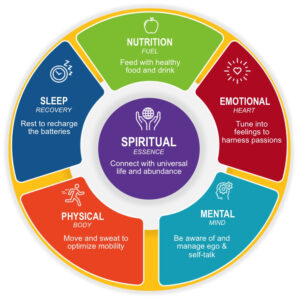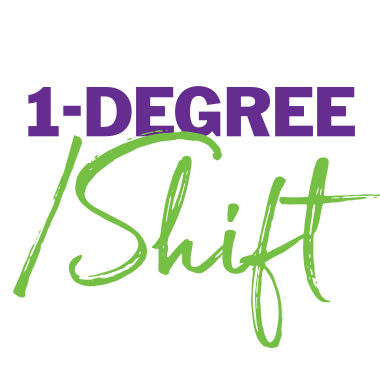“We’re very worried that the emotional and mental-health impact is going to be deep and long lasting.” – Margaret Eaton, CEO of CMHA – December 2, 2020
Most of us experience stress at work and at home. Some acute stress is good as it energizes us and helps keep us focused. But running “too hot for too long” is not healthy and will lead to chronic stress. Chronic stress will cause disease if not managed properly. I have experienced this personally and it is a frightening place to be. During COVID, stress levels have been amplified. Anxiety levels have quadrupled. The uncertainty, isolation and lack of prioritizing self-care has caused many people to be at, or close to burn-out. Let’s dig in and support each other with this vital challenge.
The Challenge
Well-being at work is a systemic challenge. There is a massive opportunity to shift the belief that “high stress is ok and just part of doing business” – it doesn’t have to be that way! I have delivered more than twenty virtual keynotes over the past few months on Being Proactive with Burnout and have many insights from these talks. I want to share here the key one.
One of the questions I always ask at the beginning of the keynote is this – “do we hold busyness & higher stress with a badge of honour?” What percentage of people do you think answer “yes” to this? In my first session, it was 100%. So I thought I would ask it again – in session #2, it was also 100%. I have now asked this question to over 1,500 people, via the Chat feature in Zoom and 100% say “yes” to this question. Think about that for a moment. That’s crazy! As the famous line goes in the movie Apollo 13 – “Houston, we have a problem.” If we believe that “busyness” and “higher stress” is right or “normal,” then that will send constant and unhealthy ripples throughout our workplace cultures.
The challenge and opportunity seem to be – how can we fuel BOTH peak performance and well-being at work? I don’t think prioritizing health/well-being alone is realistic. High performance DNA is just too entrenched in business today. But I believe a healthier balance IS possible. Well-being and high performance should not be mutually exclusive. Unfortunately most executives & leaders prioritize performance at the expense of well-being. This is the root of the problem. If we look at it with a financial lens, like a balance sheet, we are running a major deficit of well-being at work and we need a major meta level shift to get into “the black.” As we go into what feels like overtime in a playoff game with COVID, and into the first half of 2021, unless we make substantive changes with our beliefs and behaviours, we will accelerate the Echo Pandemic of mental health. So what can we do to turn the tide on this problem?
WHEEL OF WELL-BEING

Here are three practical strategies to prioritize well-being in your workplace NOW:
1/ Establish a core value to help make well-being strategic
Does your company have a value that relates somehow to well-being, wellness, caring or respecting work-life balance? Is your company and the leadership team taking a proactive approach to debunking the belief that busyness is a “badge of honour?” Here are a few leading organizations who have crafted a value to prioritize well-being:
USC (University of Southern California) – a 1-DEGREE/Shift client – recently re-calibrated their values after a university-wide, inclusive process. Here is how they define their Well-being value – one of the six unifying values for the university: We honor the whole person. We create a caring culture that fosters our ability to thrive in mind, body, and spirit as essential to the sustainable pursuit of USC’s mission. How many other elite academic institutions like USC have a value around well-being? None!
BGO (Bentall Green Oak) – a leading, global integrated real estate firm – another 1-DEGREE/Shift client – they recently re-calibrated their global values. They have a new value called Focus on what Matters. Love it! This value is about essentialism (thought leader Greg McKeown defines essentialism as “focusing on the vital few vs the trivial many”). BGO also has a supporting behaviour as part of this core value that says, “prioritize well-being.” BGO is baking well-being into their cultural DNA and has deemed it essential – inspiring!
Wello – a leading Canadian virtual healthcare business. I am a client of Wello’s and enjoy their service and they have an industry leading NPS (net promoter score) of 81%. One of their core values is CARE. They define their Care value this way – Every day we show care and compassion for clients and our team that consistently goes above and beyond client expectations.
What is the essence of well-being from the lens of these three leading organizations? It’s about focusing on the whole person, activating compassion and putting humanity at the core of how we do things.
2/ Ensure the executive team walks the talk
This is all lip service until executive teams are prepared to walk the talk. Executives must focus on and prioritize health. In order to be inspiring, we first need to be inspired and put the oxygen mask on ourselves. If executives are running haggard, not sleeping well, not getting enough exercise and running too hard, this will send a ripple of higher stress and anxiety throughout the organization. Conversely, if executives are activating compassion, creating space, helping activate what really matters and prioritizing rest, then that will send a ripple of calm and focused energy through the organization.
Prioritizing rest and well-being is counter-intuitive for most executives (including me!), but let’s look at the sports world for a healthy metaphor and lesson. What happened when the Raptors focused on “load management” with Kawhi Leonard? There was LOTS of push back on this strategy in the media and from other teams, because it was a different strategy, but the focus on load management and well-being for Kawhi and the Raps paid BIG dividends – an NBA championship in 2019. How can we take this “load management” metaphor and ethos into our organizational cultures?
3/ Set up a Vitality or Well-being Squad to activate change
In our culture development work at 1-DEGREE/Shift, we have found that creating a “culture champion crew” that acts as a guiding coalition is a key strategic lever for making meaningful & sustainable cultural shifts. We can take the same approach in the context of well-being. Prioritizing well-being for most organizations is a major cultural shift. So consider what John Brooks (an innovative Canadian industrial parts distributor) has done: create a Vitality Squad. This is a cross-functional team of approximately eight leaders. They are working strategically to co-create and implement well-being initiatives. This aims to be a strategic, holistic group of change agents vs a “committee.” They have a healthy budget, have the eyes and ears of the front line team and are adapting to and activating change to support well-being. And we don’t have to stop at one – co-create as many Vitality sqads as possible to foster connection, community and to fuel peak performance.
Call To Action
High stress levels have become normalized and breeding grounds for burnout in way too many organizational cultures today. This has both a personal and organizational cost. How can we co-create BOTH high performing AND well-being focused cultures? There are core beliefs that need to shift in our organizations NOW. We are at the beginning of the “echo pandemic” with mental health. We desperately need proactive change agents to step up, be courageous and activate well-being in our organizational cultures. Otherwise, we will be living with a high stress ripple effect for years to come. Let’s together prioritize well-being and advance humanity through our work cultures to create a healthier & more sustainable ripple effect.
Questions for reflection:
- What are your “triggers” for stress?
- How aware are you of the impact of stress?
- What are some healthy habits you can nurture to optimize your well-being?
Tim Magwood, on behalf of the 1-DEGREE/Shift team, December 3, 2020


